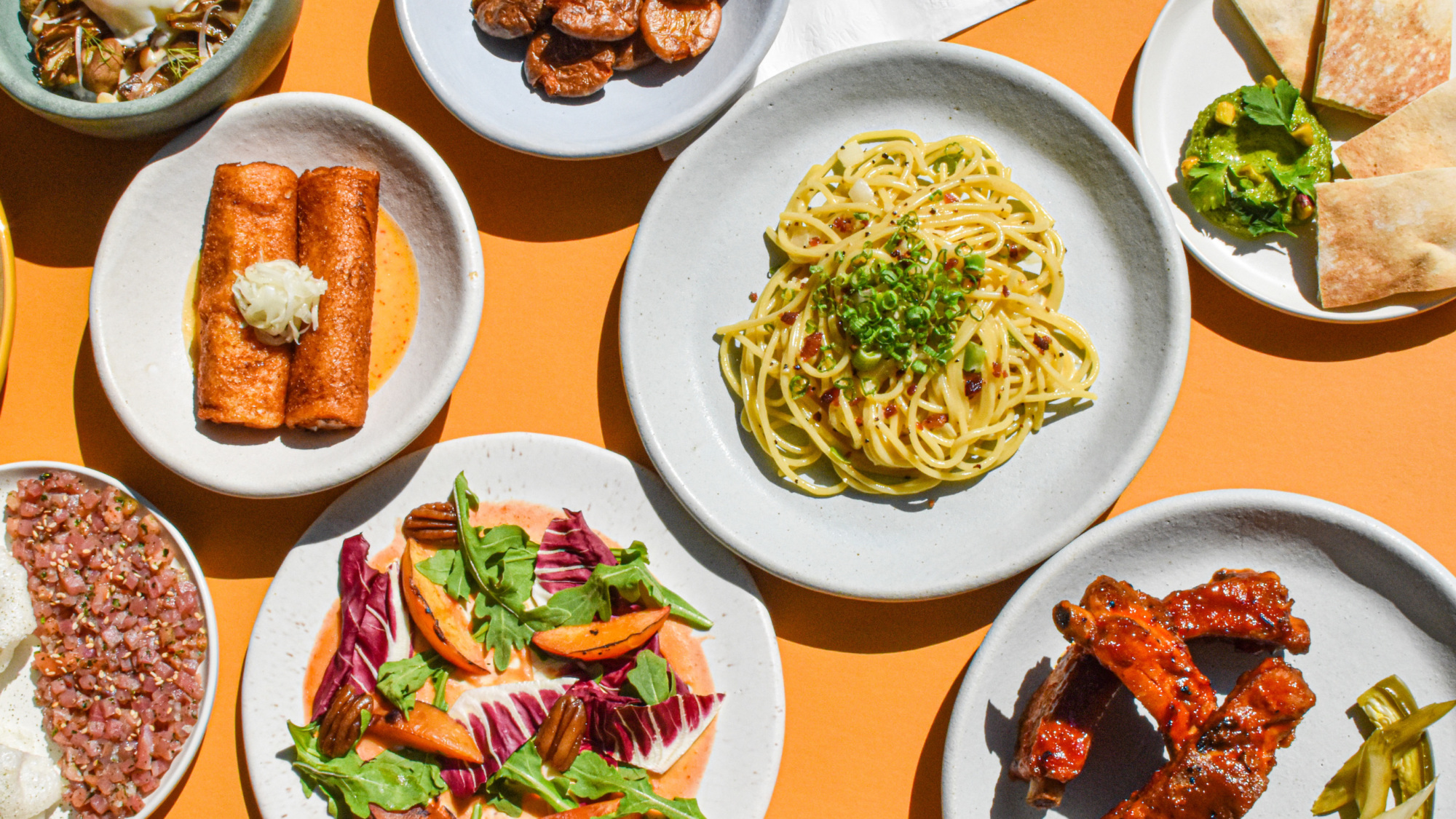
How C As In Charlie Melds Southern Hospitality with Korean American Traditions, in Five Dishes
Sweet tea might not be the first drink pairing that comes to mind when you think of Korean food, but at C As In Charlie, it makes perfect sense. The owners, chef Eric JaeHo Choi, operations director David JohnWoo Yun, and finance director Steve JaeWoo Choi are, as they say, “three boys from Atlanta, Ga.,” where sweet tea is easy to find and hard not to love.
- The Resy Guide to New York’s Essential Cozy Locales
- With NARO in Rockefeller Center, the Atomix Team Has More Big Dreams For Korean Cuisine
- Twenty-Two Excellent Private Dining Rooms in New York
- With Tatiana at Lincoln Center, Kwame Onwuachi Comes Home to New York
- Sungchul Shim and the Beautiful Evolution of Korean American Cooking
The trio met at church when they were 12 years old and have been best friends ever since. They’ve also always been embedded in the food industry. The Chois are brothers whose parents owned a deli when they were growing up, and Yun’s dad owns a food distribution company. After high school, the Choi brothers and Yun moved to New York and pursued different paths in the restaurant business with the shared goal of opening their own restaurant one day — a goal that’s been realized in C As In Charlie.
“Some part of us is Korean, some part of us is American, and some part of us is Southern. So we want to really meld that into our restaurant,” Yun says. “We wanted to bring the sweet tea culture to New York,” he continues, explaining the complimentary beverage they serve to every diner upon arrival.
That culture extends beyond their well-balanced version of this Southern staple, too. Hospitality is the top priority for the C As In Charlie team. Diners will pick up on this immediately in the comforting dishes, warm vibes of the staff, and lively atmosphere of the dining room. (Anyone who visits the restroom will also observe a disarming sense of humor in the neon lights meant to be Charlie Brown’s eyebrows, in honor of the restaurant’s name, and a number of other playful, if puzzling, wall decorations. It’s worth the trip.)
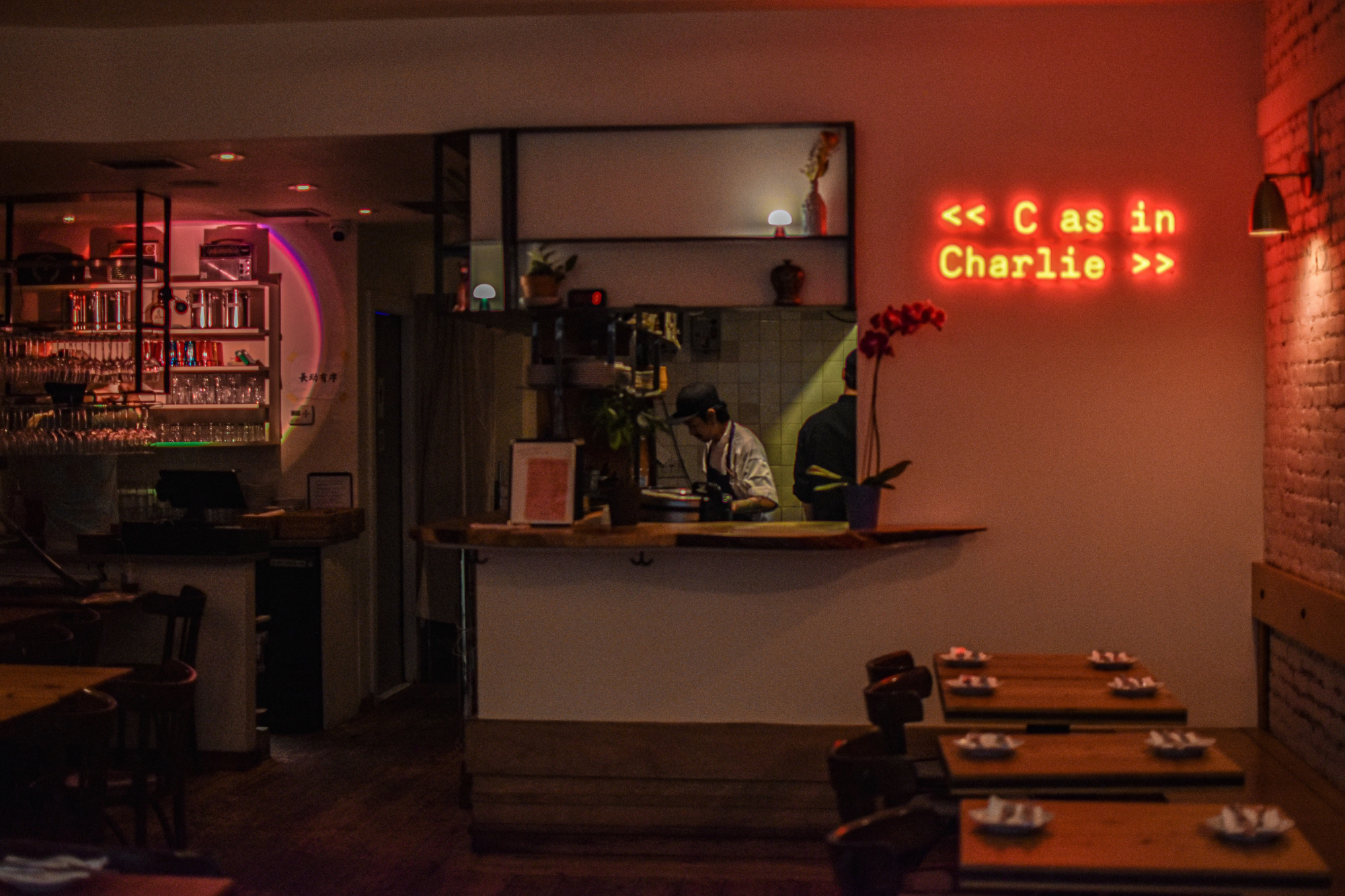
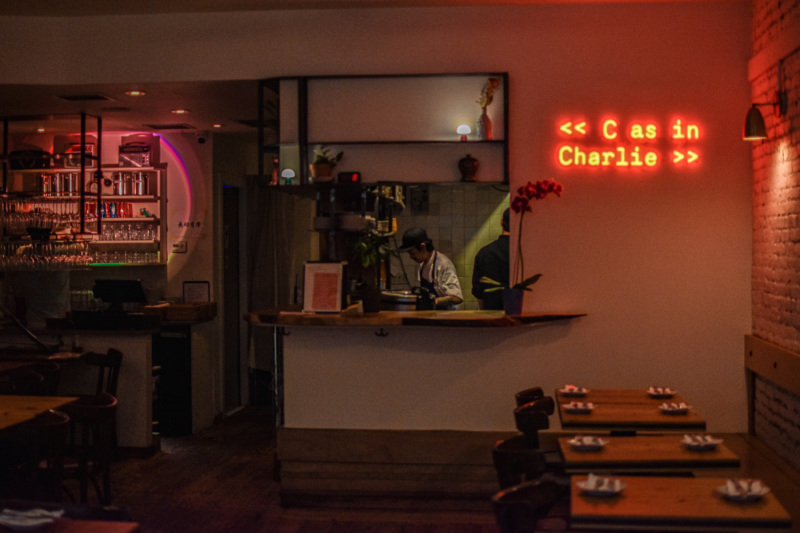
For anyone wondering about the restaurant’s name, it’s a reference to two things: One, the team was originally trying to rent a space on Avenue C before they ended up on Bleecker Street, in the space once occupied by Bessou. Two, Yun explains: “As Asians, C is really hard to pronounce, so we always grew up listening to our friends say, ‘C as in Charlie.’ We thought, ‘That really brings out our memories as immigrants in the United States and resembles us.”
Personal narrative shows up throughout the menu, too.
Beyond the sweet tea, that melding of their Southern and Korean roots comes out in dishes like Seoul’sbury steak, mushroom bibimbap, and rotating dessert items, including “B as in Banana Pudding.” Butter also makes regular appearances, rounding out savory and salty dishes, as do other ingredients the team grew up with, including spaghetti and Tabasco.
Here’s a look at five dishes where that mix of Korean American roots and Southern hospitality shines.
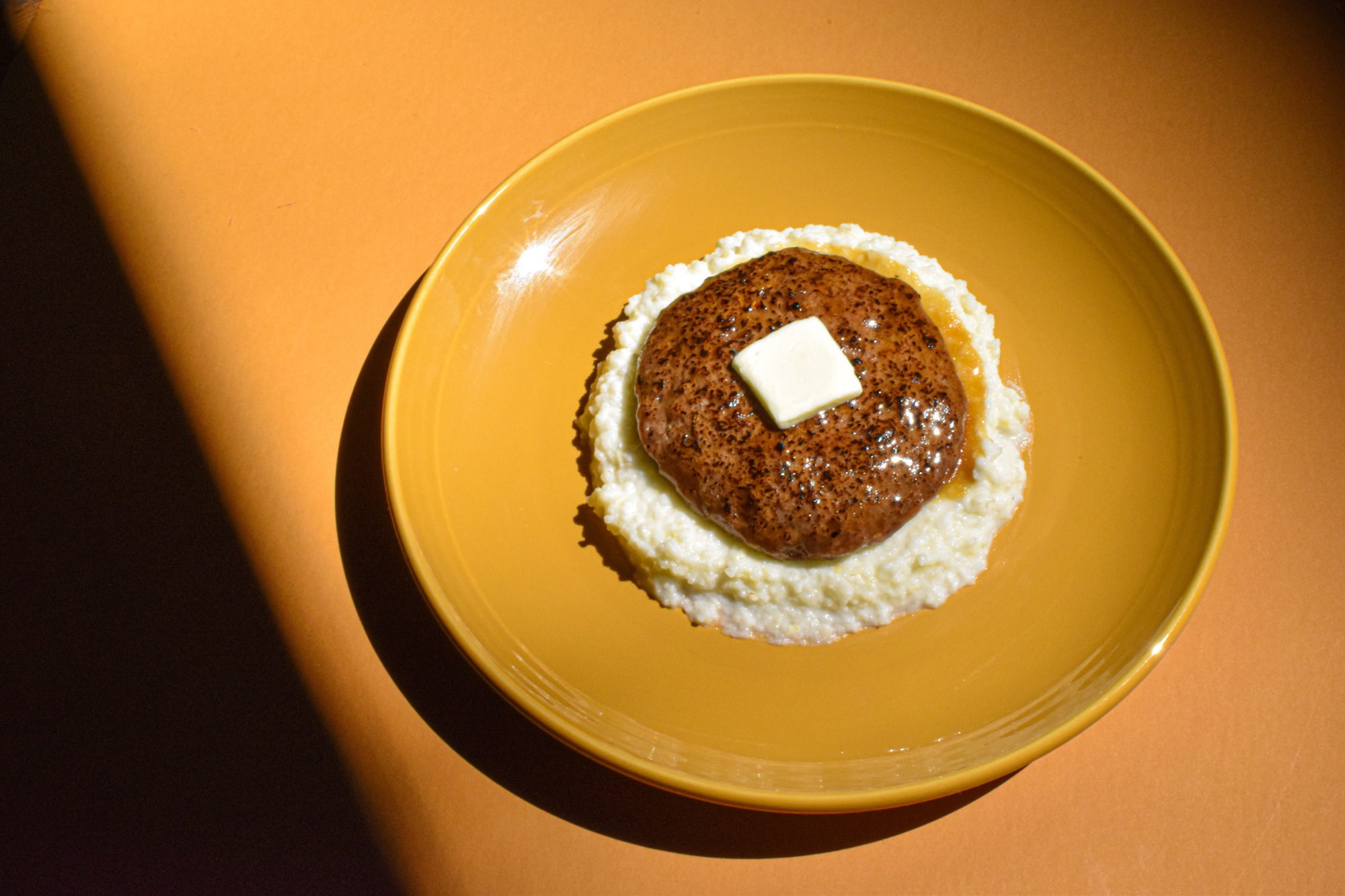

1. Seoul’sbury Steak with Galbi Jus and Gruyère Grits
A clever play on Salisbury Steak with Korean flavors, this eye-catching dish consists of ground meat marinated in an ox bone broth-based sauce, atop a rich and creamy pile of cheesy grits.
“Steve and Eric’s parents owned an American restaurant in Georgia, and there were always leftover hamburger patties, so their mom would turn those into a Korean dish called tteok-galbi, made with the traditional galbi, or short rib, marinade. So when we were developing the menu, that’s something we initially wanted to do, and we added the grits because that’s something you get in Southern states. [Chef Choi] branded the grits in his own way by using Gruyère cheese,” Yun says.
“I tried the grits with a lot of cheeses and the Gruyère really blended well with the galbi jus. It was the perfect match,” chef Eric Choi adds.


2. Mushroom Bibimbap
This savory bowl of rice cooked in a mushroom-infused soy sauce comes with mushrooms (hen of the woods, shimeji, and/or maitake) sauteed in butter, and gets topped with a poached egg and pickled shallots.
For the mushroom base of this dish, Choi follows the technique for making Japanese tare sauce: boiling and reducing soy sauce mixed with different ingredients. He braises mushrooms and uses them to enhance Korean soy sauce — a process that will create deeper flavors over time as the soy sauce continues to boil down and he adds new soy sauce to the pot. The poached egg, which creates a velvety topping, and the acidic pickled shallots, are other atypical additions.
“If you say ‘bibimbap’ in the United States, most Americans think of one kind of bibimbap, which is in a hot stone bowl with chili pepper sauce, and you just mix everything up. But there’s actually tons of different types of bibimbap in Korea and it all depends on the region,” Yun says. “We wanted to bring in something a little different from what is common in the United States. [The mushroom bibimbap] is common in the Jeonju region, where they use a lot of mountainous vegetables. And the way that we use soy sauce instead of gochujang (chili pepper paste) is inspired by Andong-style bibimbap.”
“Because of chef’s immigration status, he has not been able to go back to Korea since he was 11 years old,” Yun continues. “So, he was always watching Korean documentaries and TV, and one of his hobbies was trying to recreate the dishes he saw. This bibimbap is a dish [Eric] worked on in the past when we lived together and we really liked it.”
3. Shrimp Toast Roll
C As In Charlie’s play on shrimp toast — minced shrimp between two pieces of fried bread — presents itself more like an egg roll than the typical sandwich. The shrimp is rolled and fried in a wrapper and topped with citrus-pickled onions. It comes with a sweet chili mayo for dipping with every bite.
“Shrimp toast has really become a trend in Korea and other Asian countries. It’s called menbosha (or mian bao xia), and though it’s originally a Hong Kong dish, a lot of restaurants in Korea are known for it,” says chef Choi.
“Koreans have interpreted menbosha in their own way,” Yun continues, “but Eric has his own interpretation.” He rolls it up and serves it with a sauce made with Tabasco, mayo, and sweet chili sauce. It’s a top-seller and, with a glass of sweet tea, is a great way to start any meal.
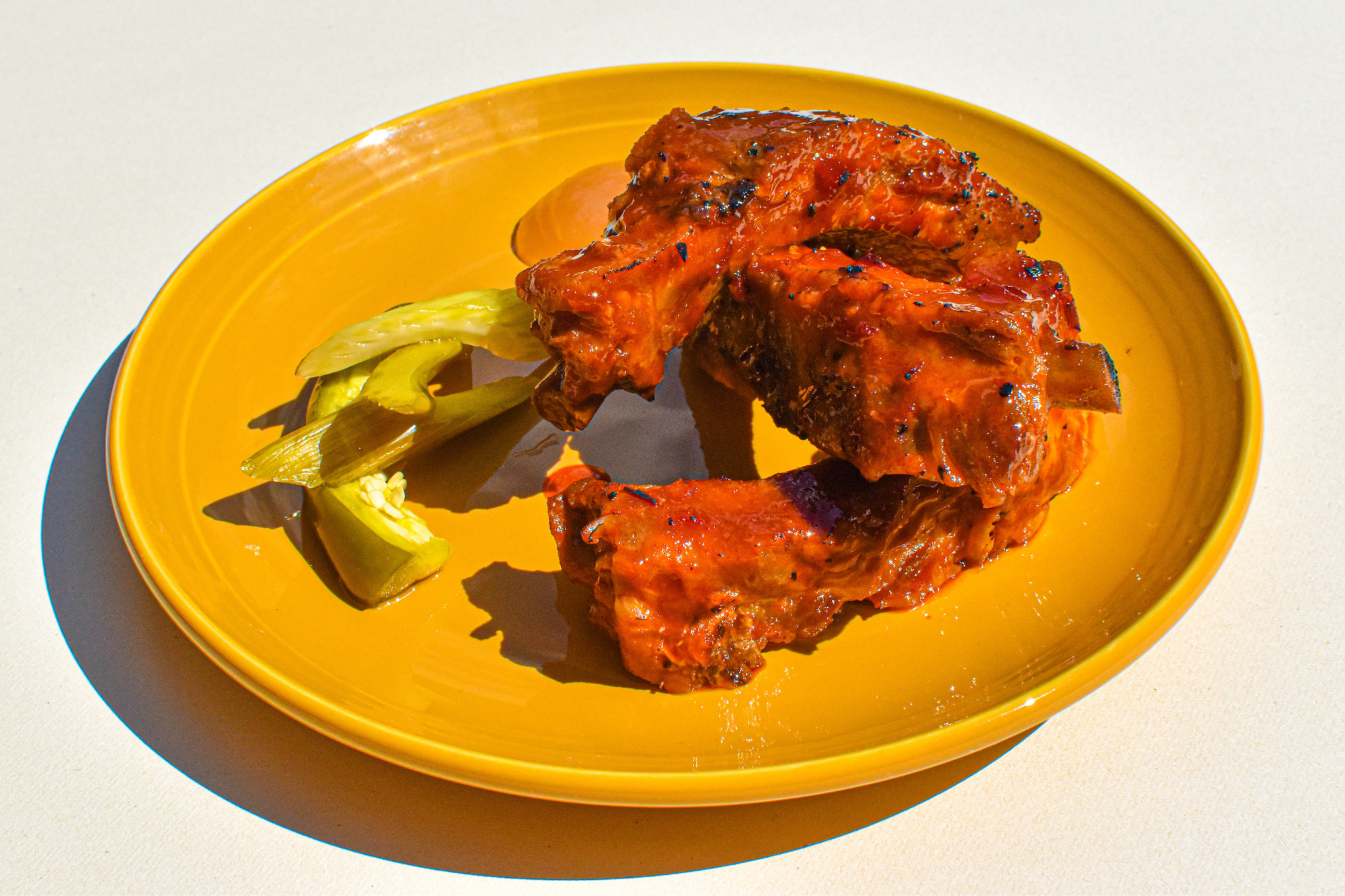
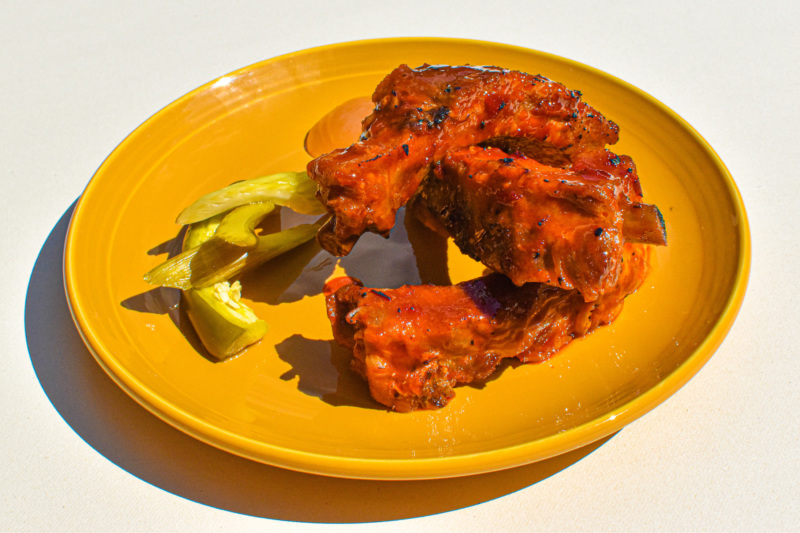
4. Baby Back Pork Ribs with Harissa and Plum Coulis
These slow-roasted baby back pork ribs are rubbed with a sauce of harissa, gochujang, and honey before being cooked and served with a side of plum coulis and plum-pickled jalapeno celery.
“First, I use a dry rub, then I cook the ribs for two hours and 30 minutes. Then we cool them down and cut them into pieces, and put them under the salamander. I also rub the sauce on before cooking and two times while the ribs are cooking under the salamander,” says chef Choi.
Applying the sauce multiple times ensures that the flavors really blend into the meat.
“If you taste the sauce on its own it’s really strong, but that’s why we balance it out with something sour and citrusy on the side,” Yun adds, speaking about the plum coulis and pickled jalapeño and celery that comes alongside the ribs. The result is a balance of spicy, nutty, and sharp notes that complement the slow-roasted tender pork.
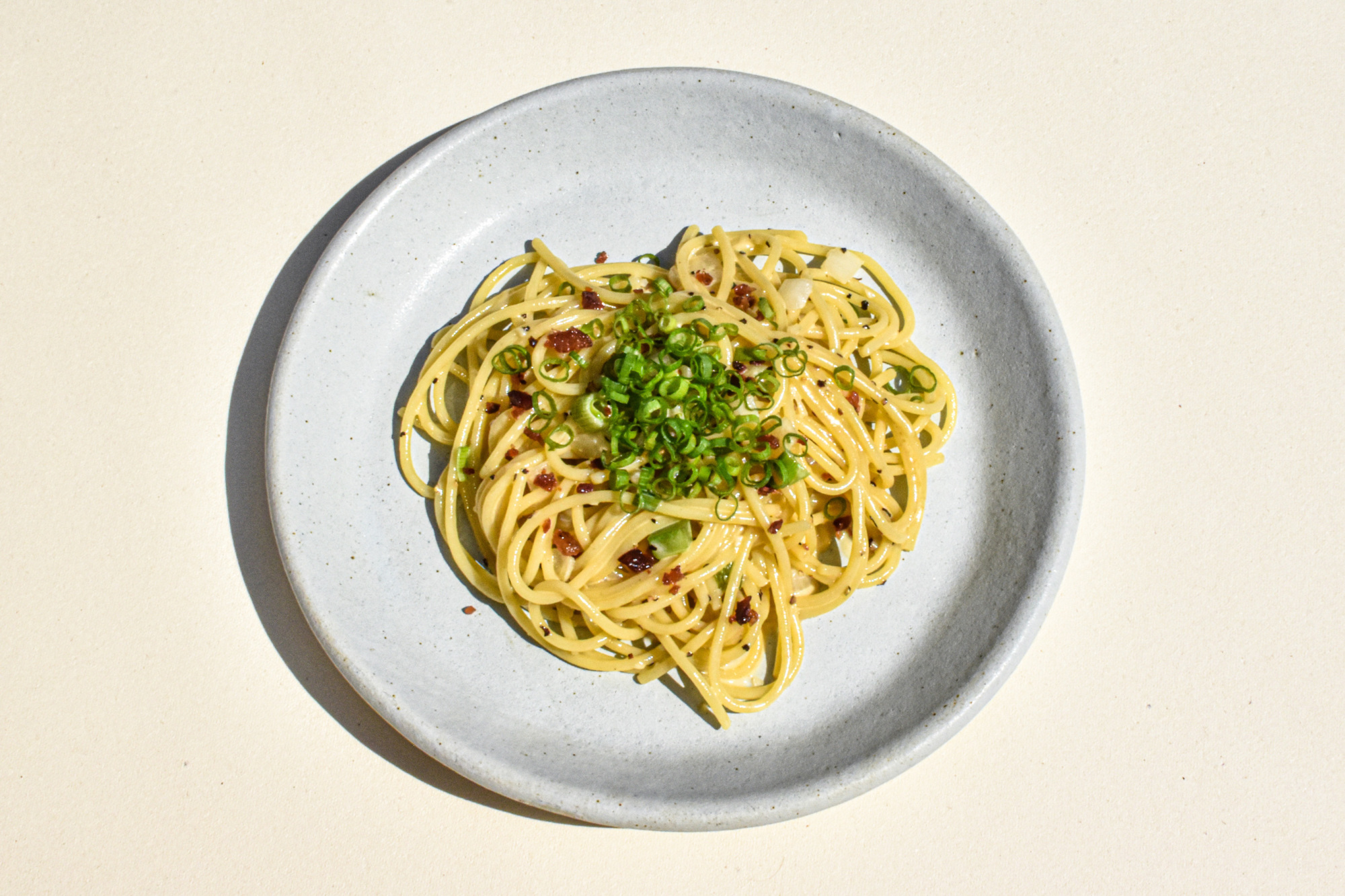
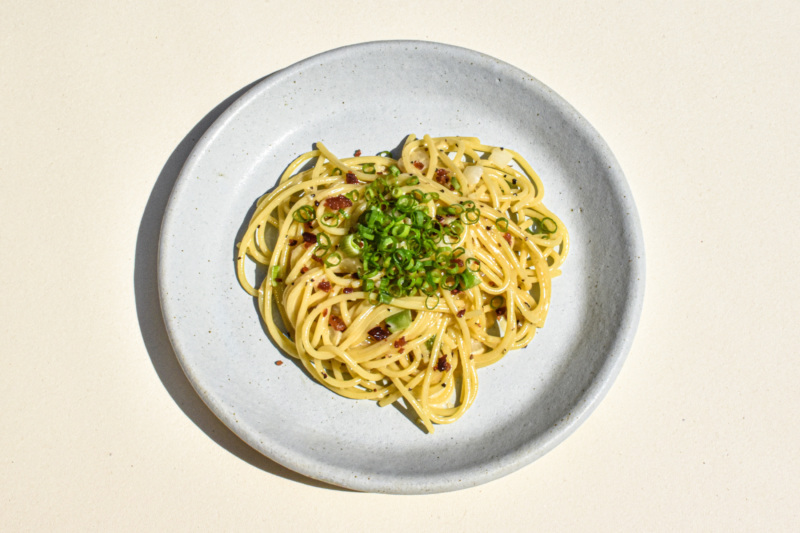
5. Oxbone Cream Pasta with Bacon and Scallion
This popular pasta is made with ox bone marrow cream and topped with bacon, black pepper mignonette, and scallions.
“When I first came to the United States, where I lived in Maryland there was no Korean supermarket at all,” Yun says, launching into an explanation of the origin of the pasta. “We of course missed Korean food, but there were no Korean grocery stores or restaurants. So, if we wanted to eat something like pork belly barbecue, we would just go to the American grocery store and buy bacon and then try to cook it as Korean-style pork belly. In that same way, [we would approach] the really popular ox bone marrow soup. It’s made with a 12-hour-cooked broth with scallions, a little bit of beef, and some wheat noodles. Since my parents couldn’t find the Korean-style wheat noodles, they would just buy spaghetti to substitute in there. So when we were developing our dishes [for C as in Charlie], we wanted to use American ingredients for a Korean dish and the ox bone marrow soup got deconstructed into a pasta. It’s a simple dish, but if you taste it, you’ll think it took a really long time.”
“When I was researching the soup, the black pepper flavor played a very important role,” adds chef Choi, who likens the prominent role of pepper in a simple dish to that of the spice in the uber-popular Roman pasta, cacio e pepe. Drawing a further similarity between that pasta and his own, Choi explains that instead of using Parmesan cheese for the savory element, he uses ox bone broth.
C As in Charlie is open daily, from 5 to 11 p.m. on Sundays through Thursdays, and 5 p.m. to midnight on Fridays and Saturdays.

What to Eat and Drink in New York Right Now
Welcome back to the Resy Lineup, your biweekly dose of recommendations on what to eat, drink, and see. In this very…
Discover More

Stephen Satterfield's Corner Table















